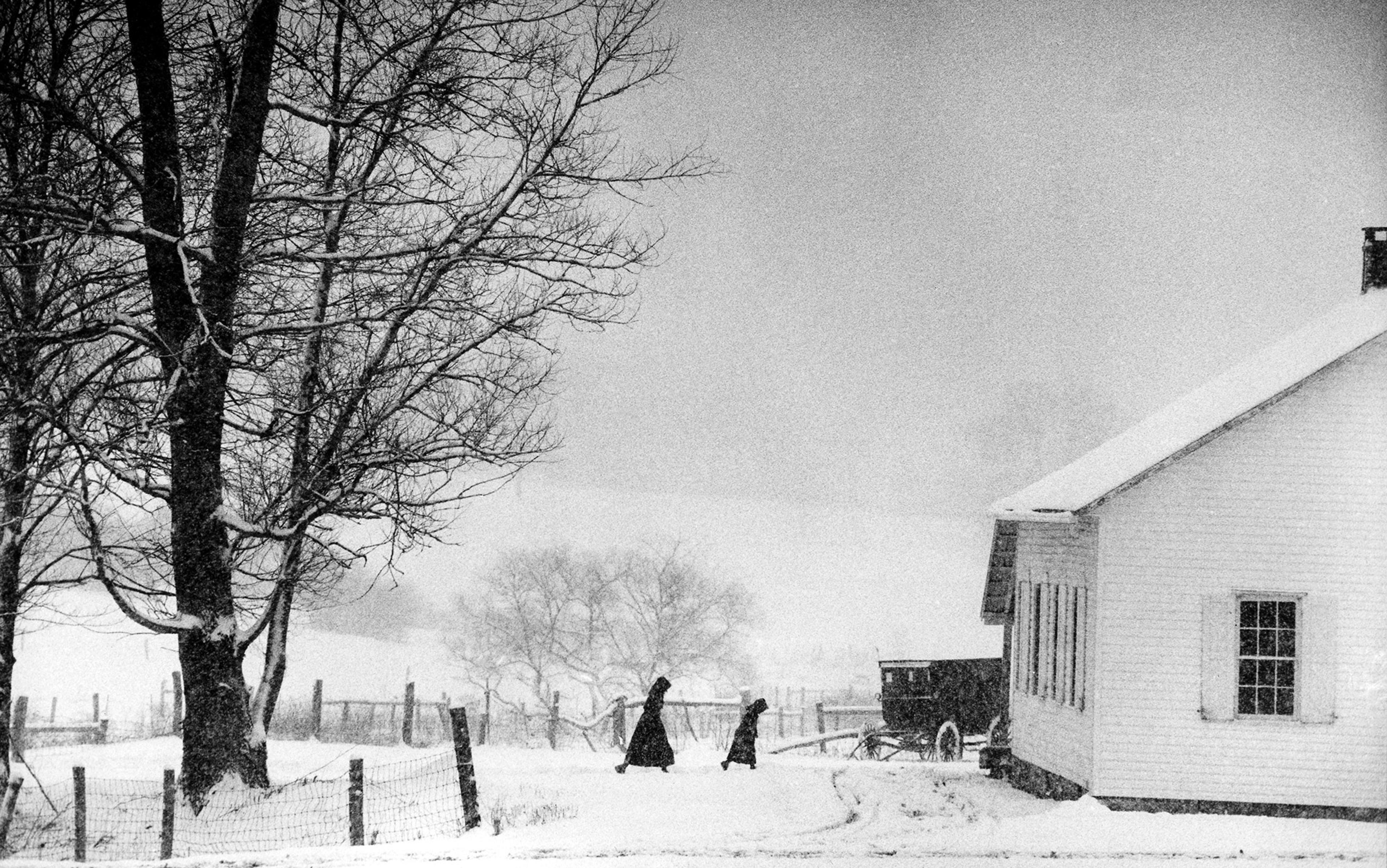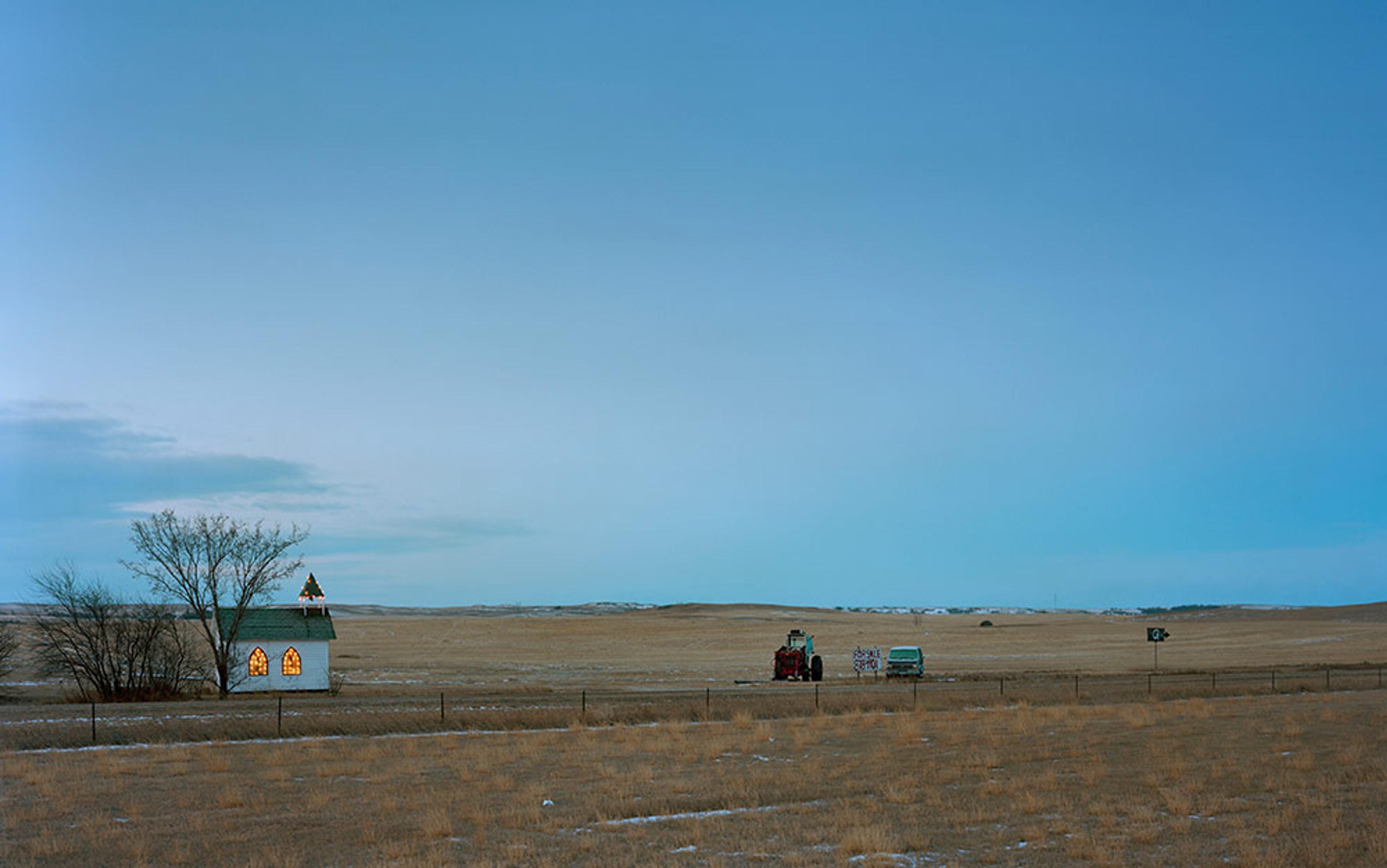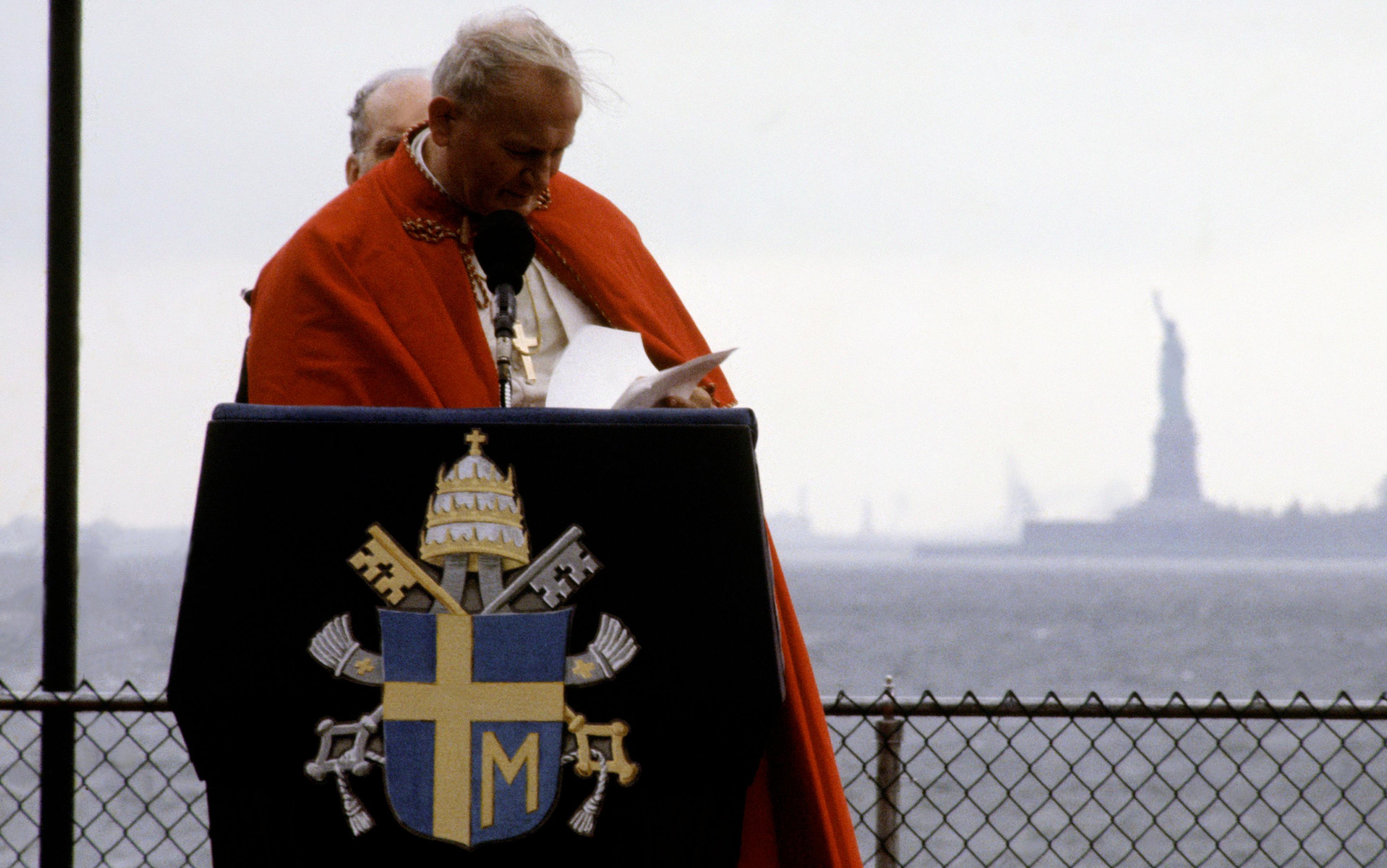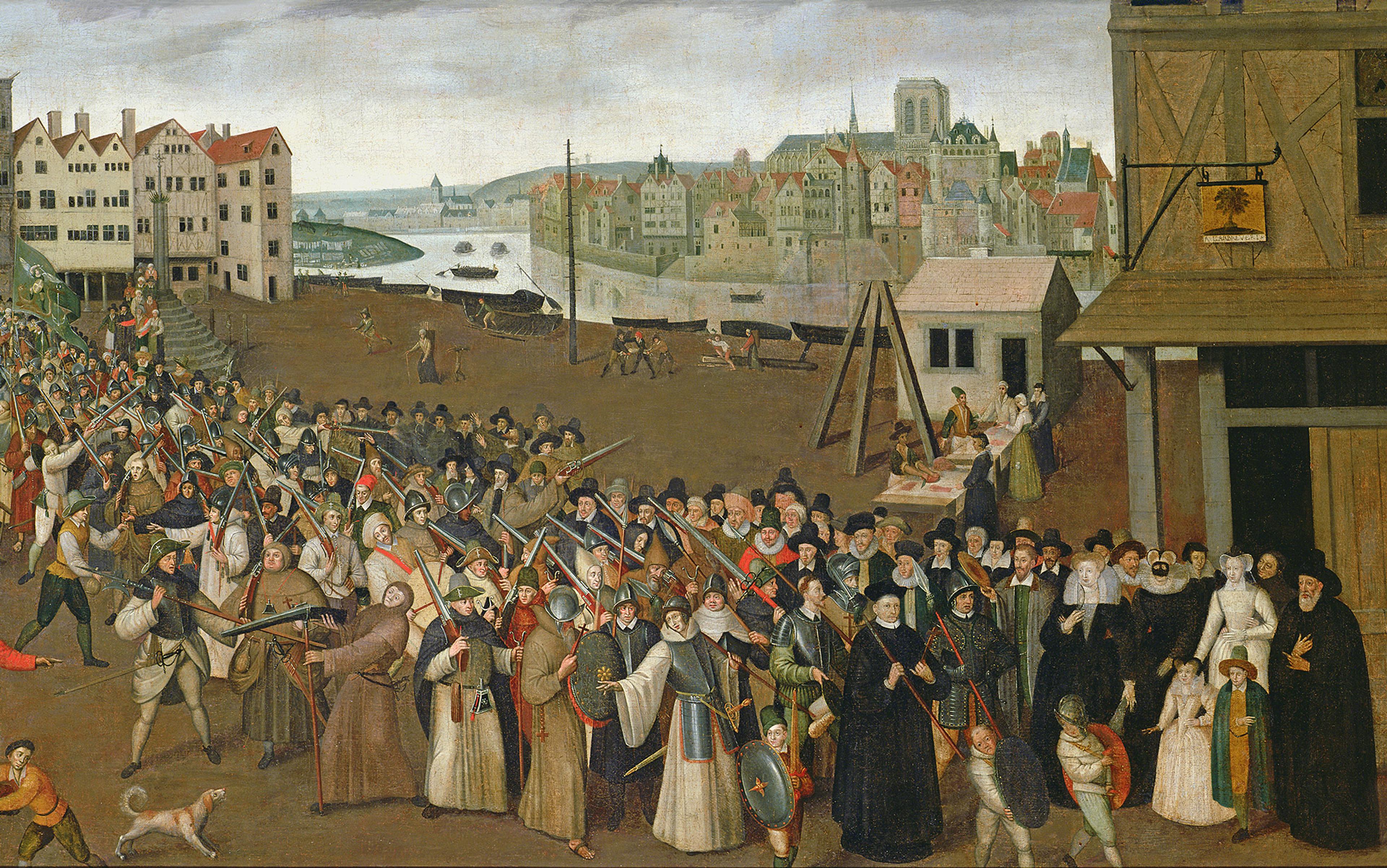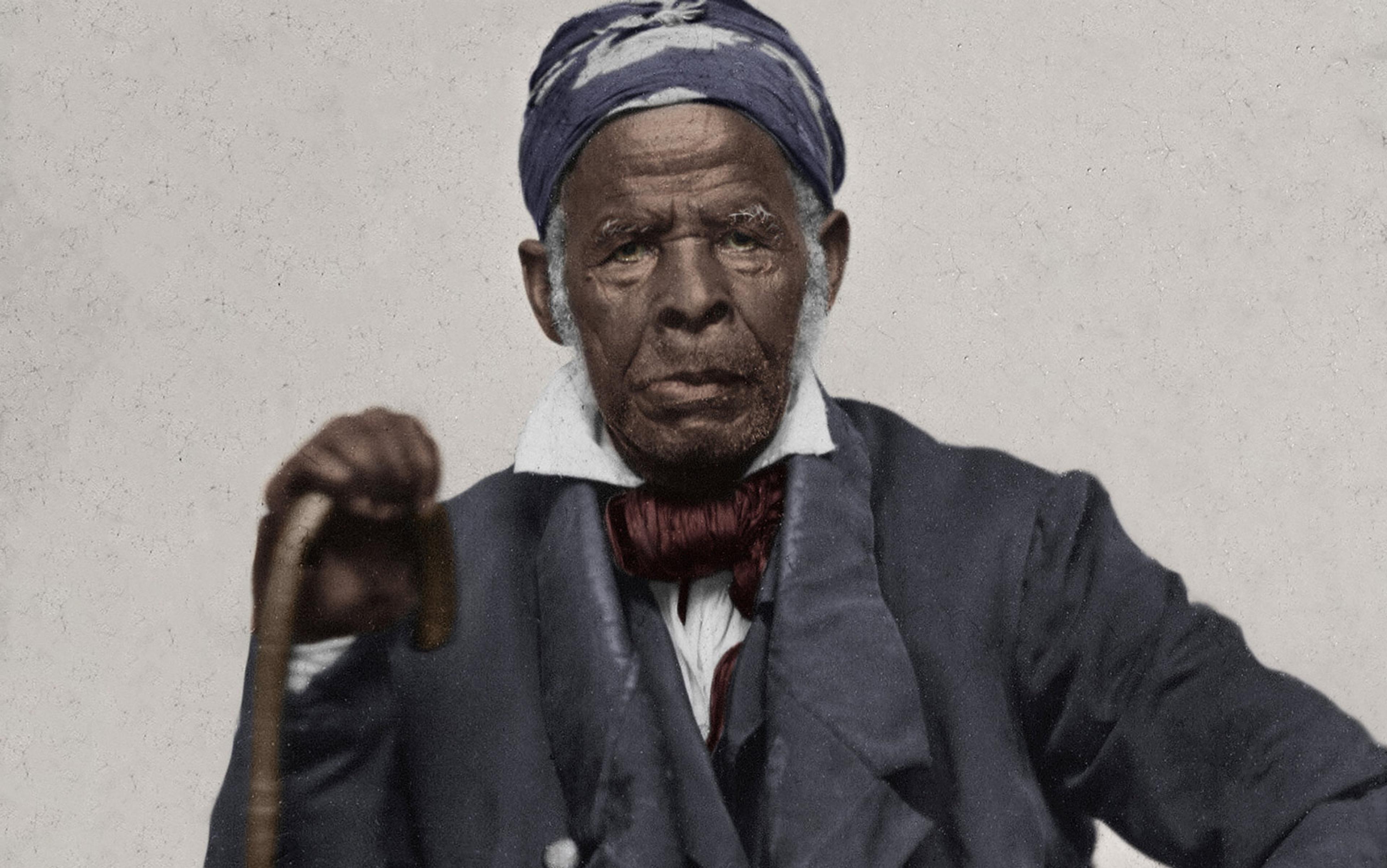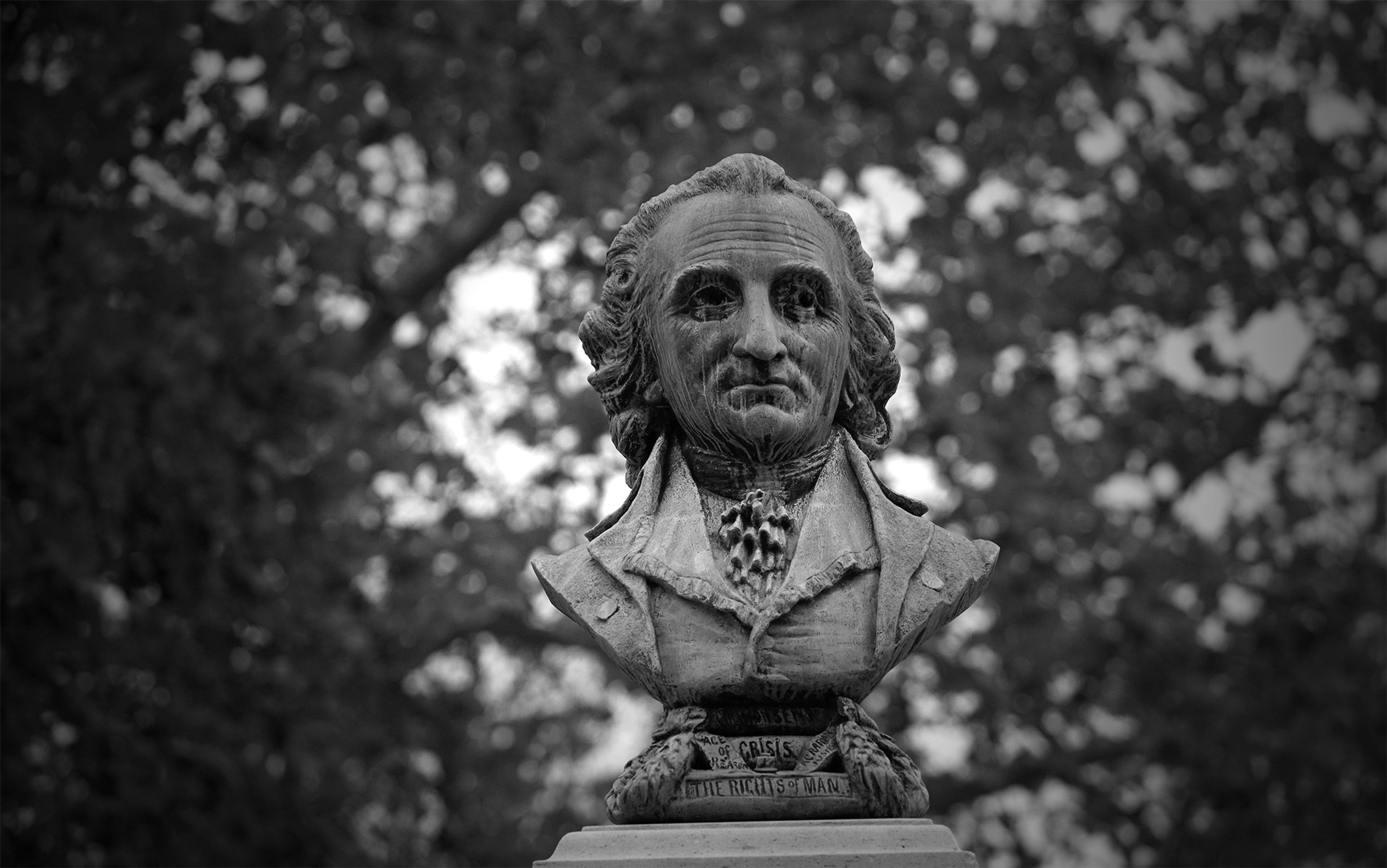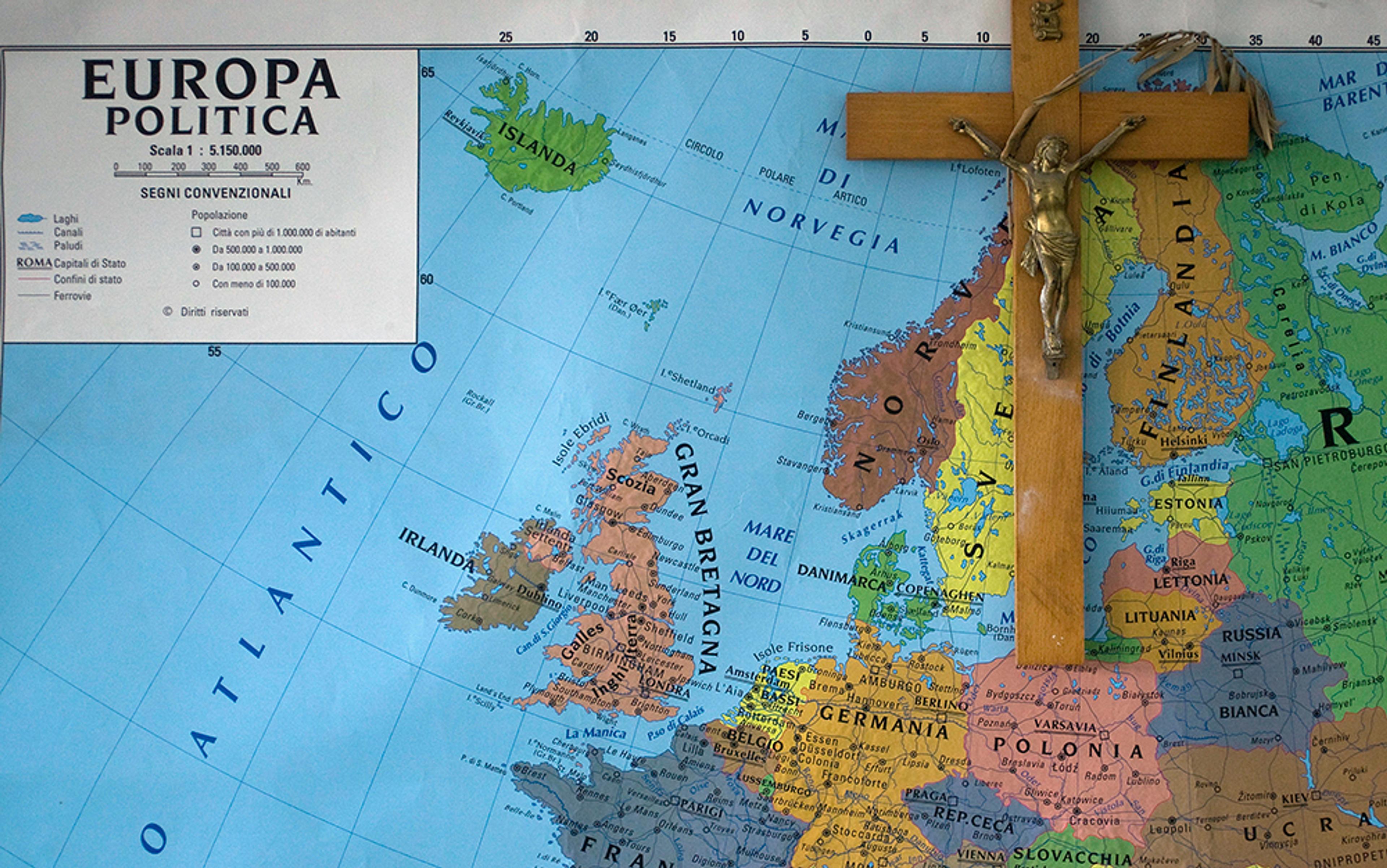The age of revolution brought an enlightened political ideology to the modern world. Among its many achievements, none faces greater global challenges than freedom of religion. Today, it seems almost unthinkable that any deeply religious people, whether in the Middle East or the United States, would create constitutions, bills of rights and statutes that would not only guarantee their own freedom of conscience, but also the religious faith of others. Why, we wonder, and how, did revolutionary-era Americans choose to adopt a radical regime of religious freedom?
Their reasons did not rely on any idealistic consensus that religion must be separate from politics and instead owed everything to their deep suspicion of power in the hands of flawed humanity. Informed by centuries of European history, revolutionary-era Americans believed that governments empowered to coerce belief – long the common European practice – became tyrannical. History proved that, where religion was concerned, governments resorted to coercion. Consequently, to provide a barrier against tyranny, key American patriots believed that protecting religious freedom was vital.
But old ways died hard. Leaders in every American state argued that religious observance was not only a divine commandment, but also a bulwark of social and political order. As a result, defenders of Protestant faiths battled over religious taxation almost everywhere, and debated whether to maintain established churches. At independence in 1776, nine of the 13 colonies were supporting state churches; yet by 1860, the US would become a country of almost complete religious freedom. How did this happen?
As early as June 1776, Virginia’s Declaration of Rights laid down the principle that ‘all men are equally entitled to the free exercise of religion’. This language, composed by George Washington’s neighbour George Mason appealed to Thomas Jefferson. Jefferson was at work drafting a state constitution and, in it, he echoed Mason’s doctrine with a provision that ‘All persons shall have full and free liberty of religious opinion; nor shall any be compelled to frequent or maintain any religious institution’. Virginia’s long-established Anglican Churchmen fiercely opposed this proposed disestablishment of their church. Arrayed against them, the state’s numerous Baptists and Presbyterians favoured the measure. Still, many patriots thought that ending state support for the Anglican Church would plunge Virginia into immorality and infidelity – magnifying the very disorder that the revolution provoked. The reformers’ rejoinder – that Pennsylvania, which possessed no religious establishment and no state support for religion, was not awash in immorality or infidelity – did not convince defenders of the status quo.
The result in Virginia in 1776 was compromise. Virginia suspended support for Episcopal priests and exempted Presbyterians and Baptists from religious taxes. Followers of other faiths and non-believers must still support the Episcopal Church, though they were not required to attend its services. The Episcopal Church also kept its monopoly of marriage fees and revenues from land dedicated to poor relief. This arrangement briefly stilled sectarian conflict. Three years later, when Jefferson won election as governor in 1779, he and James Madison attacked the remaining Episcopal establishment by sponsoring a statute of religious freedom. Though the legislature tabled their statute, it voted to end tax support for the Episcopal Church.
A few years later, after the war ended, governor Patrick Henry, supported by Episcopalians and Methodists, proposed using taxes to pay clergy of major Protestant denominations. Leading Virginians such as John Marshall and Washington, the national hero, thought Henry’s proposed state support for Protestantism reasonable. Baptists and Deists, however – coming from opposite ends of the religious spectrum – mobilised and blocked it with petitions carrying an unprecedented 11,000 signatures. Exploiting this momentum, Madison seized the offensive, bringing Jefferson’s Statute for Religious Freedom to a victorious vote in the Virginia legislature.
Virginia’s Statute for Religious Freedom expressed the revolutionary generation’s most fully developed commitment to equal religious rights. God, the statute read, had ‘created the mind free’. Indeed ‘the Holy author of our religion’ rejected earthly coercion. The law proclaimed that ‘our civil rights have no dependence on our religious opinions, any more than our opinions in physics or geometry’. As Madison explained, if government could establish one religion, government could establish any religion. Just before Christmas 1785, Jefferson’s bill passed by a vote of 74 to 20. Afterwards, when a delegate proposed that ‘the Holy author of our religion’ be identified as ‘Jesus Christ’, a great majority of the delegates voted that down. The law, Jefferson wrote, aimed to be ‘universal’; it should protect ‘the Jew and the Gentile, the Christian and Mahometan, the Hindoo, and infidel of every denomination’.
Disestablishment of Virginia’s state church opened the way for new possibilities. Virginia’s law moved beyond disestablishment, and beyond mere toleration, decisively. No religion stood above others, and the absence of belief was assigned equal stature with formal religions. This made Virginia unusual. At first, most states merely enacted some form of toleration – guaranteeing the freedom of all to worship as they chose – but maintaining tax privileges for a preferred church. In New England, for example, states continued tax support for Congregational and Presbyterian churches. In the US there was no consensus in equal rights for religion; each state made its own policy.
In North Carolina, Virginia’s neighbour to the south, Presbyterians blocked full religious equality by including a provision in the state’s 1776 constitution specifying that office-holders must be Protestant. Yet when the legislature selected a governor in 1781, it chose the Irish Catholic Thomas Burke, re-electing him twice. In 1800, voters elected another Catholic, William Gaston, to their state senate, and Gaston went on to be elected as Speaker of the North Carolina House, as a US congressman, and as a North Carolina Supreme Court justice. North Carolinians were so relaxed about enforcing their constitutional bar against non-Protestants that in 1809, Beaufort County, North Carolina, elected Jacob Henry, a Jew, to the state legislature.
In revolutionary-era New York, patriots repudiated the colony’s long-standing prohibition on Catholic worship. New York State’s Constitutional Convention not only rejected established religion in 1777, it shifted toward religious equality. The new state constitution ‘abrogated’ all laws ‘as may be construed to establish or maintain any particular denomination of Christians or their ministers’, declaring them ‘repugnant to this constitution’. In New York, support for the Episcopal Church was finished; and no religion or religions would ever again take its place.
To reinforce the separation of church and state, New York’s new constitution excluded all ‘ministers of the gospel … or priest of any denomination’ from ‘holding any civil or military office’. Most dramatic, it expressed broad commitment to religious equality. We ‘are required’, it declared, ‘by the benevolent principles of rational liberty, not only to expel civil tyranny, but also to guard against that spiritual oppression and intolerance wherewith the bigotry and ambition of weak and wicked priests and princes have scourged mankind’. New York was not only anticlerical, it declared ‘the free exercise and enjoyment of religious profession and worship, without discrimination or preference, shall forever hereafter be allowed, within this state, to all mankind’. The only prohibitions were ‘acts of licentiousness, or … practices inconsistent with the peace or safety of this state’. Reversing New York’s long record of anti-Catholic regulations, the state moved decisively toward religious equality. Now Catholics could worship in public and possess all civil rights in New York.
Not until 1802 would a Catholic be allowed to hold office in New York City
Yet enduring fears of the Papacy – ‘weak and wicked priests and princes’ – soon resurfaced in New York. For immigrants, whose naturalisation as state citizens included a loyalty oath, John Jay, a Huguenot-descended patriot legislator, succeeded in adding a barrier to block Catholics. New citizens and voters must renounce all loyalty to foreign kings or officials, both civil and ecclesiastical. Whereas Quakers could ‘affirm’ rather than swear, and no faith barrier blocked Jews from citizenship, Catholics could not conscientiously refuse loyalty to the head of their Church, the Pope. Consequently, the state denied them equal access to citizenship and political rights.
New York City Catholics petitioned Congress for relief in 1783; but Congress, lacking jurisdiction, referred them to the author of their disability, New York’s legislature. For a full generation, this exclusionary oath undermined the grand principles of New York’s 1777 constitution. Not until 1802 would a Catholic be allowed to hold office in New York City; and it would take four years and petitions from 1,300 Catholics and their supporters before legislators removed the barrier word ‘ecclesiastical’ from the loyalty oath, enabling naturalised Catholics to sit among its members. This step also allowed state funds to subsidise a New York City Catholic school, just as the state subsidised Protestant schools.
When, in 1821, New York revised its constitution, it erased all traces of religious discrimination from New York’s highest law. Several years later, a Jewish immigrant from Germany claimed ‘here we are all the same, all the religions are honoured and respected and have the same rights’. In the nation as a whole, New York’s movement toward equal rights in religion was characteristic (although persecution of Mormons, chiefly because of their militant commitment to polygamy, was widespread, and anti-Catholicism remained a common Protestant prejudice until well into the 20th century). US law moved decisively toward religious freedom; but among Americans themselves, full equality among the faithful and non-believers remained a promise, not a full-fledged reality.
Many revolutionary-era American leaders recognised that Enlightenment secularism was only one reason citizens might support prohibiting government from promoting or interfering with religion. At the state level, where more of the governing actually happened, voters often approved state support of religion. The North Carolinians and New Englanders who supported religious tests within their own states, however, often opposed granting the same powers to a distant national government that might favour different religions or apply different religious tests. Consequently, when the Constitutional Convention voted overwhelmingly that ‘no religious test shall ever be required as a qualification to any office or public trust under the United States’, it was Christians’ fear and jealousy of rival Christians, not just Enlightenment secularism, that led many to support separation of church and state.
The national government was more secular than the state governments. The first six presidents – none of whom was a converted Christian – all held Enlightenment views supporting toleration and religious freedom. During this same time, however, some states maintained restrictions on Catholics and Jews. Washington, Jefferson, Madison and John Adams – two of whom helped to write the Constitution – all supported separation of national government from religion, and all followed the Constitution’s prescribed secular language in taking the oath of office.
Washington did proclaim that ‘religion and morality are indispensable supports … to political prosperity’ in his ‘Farewell Address’, but he stressed their social value, not commitment to any particular faith. When clergymen pressed him to declare publicly his own Christian faith, Washington demurred. To his pastor’s dismay, as president he refused to take communion; and when he referred to divine power, Washington never spoke of ‘Jesus’, ‘Christ’, a ‘saviour’ or a ‘redeemer’. Even as he lay dying, the elder statesman did not mention heaven or allude to reunion of loved ones. Facing death, Washington never called for a clergyman, never asked for prayers, never expressed repentance. Nor did Washington provide donations for religious purposes in his elaborate last will and testament. Keeping his own beliefs private during the controversies over disestablishment in Virginia, he argued that keeping religion separate from law and politics was ‘productive of more quiet to the state’ than any other policy.
Adams, who succeeded Washington in the presidency, had defended Massachusetts’s tradition of public support for Congregational churches, but Adams excluded religion from national policy. When the French Revolution’s anti-Christian politics provoked a frenzy among New England clergy and federalist politicians, Adams remained aloof. The determined secularism of the Washington-Adams administration was manifest in the nation’s 1796 treaty with Tripoli. Negotiated under Washington, and approved unanimously by the Senate in 1797, it was signed by Adams. He declared: ‘As the government of the United States of America is not, in any sense, founded on the Christian religion; as it has in itself no character of enmity against the law, religion or tranquility of Musselmen; … no pretext arising from religious opinion shall ever produce an interruption of harmony existing between the two countries.’ Though both Washington and Adams accepted Protestant chaplains to assist members of Congress, for Adams no less than for Washington, religion was separate from national government. Americans, it was true, were mostly Christian, but their national government had no religion.
Much more than Washington or Adams, Jefferson and Madison advocated forcefully for keeping religion separate from government. Having fought together to disestablish the Anglican Church in Virginia in the 1780s, they brought their secular mission to the national government. In 1802, in his widely reprinted public letter to the Baptist Association of Danbury, Connecticut, Jefferson as president announced his ‘reverence’ for the First Amendment because in it ‘the whole American people’ built a ‘wall of separation between church and state’. Jefferson’s letter to the Danbury Baptists articulated his broad, idealised interpretation of the First Amendment.
Madison, perhaps even more committed to fostering a secular state than Jefferson, tried, unsuccessfully, to extend First Amendment protections to the individual states, so that ‘no state shall violate the equal right of conscience’. Madison also repudiated chaplains for Congress, arguing that appointing official clergymen was ‘a palpable violation of equal rights, as well as of constitutional principles’. But Madison lost these battles for a strict boundary separating church and state. In law, the US was not a Christian nation; but it was a popular republic whose ruling majorities embraced various forms of Christianity and wanted Christianity to flourish. Consequently, as Madison recognised, the struggle over state support for religious privileges and incentives would persist. There was never a solid ‘wall of separation’, as Jefferson would have it, but rather, as Madison wrote, a shifting and porous boundary between religious and civil authority.
the ideal of religious equality proclaimed as an ‘unalienable’ right in the Declaration changed the world
Though Americans have never definitively resolved the status of religious equality, the early republic remains the nation’s formative period of religious public policy. Engagement in religion – assertive and dynamic – meant that then, as now, no one could banish religion from public debates or electoral politics. Consequently, the interplay of religious interests and beliefs with law and government shaped US politics. Over time, each state would negotiate its own equilibrium for church-state relations. Virginia, Jefferson’s and Madison’s model, became something of a secular outlier; nevertheless, every state moved away from most of the sectarian and Christian privileges that had been common before 1776.
In the 1850s, a rapid influx of Roman Catholics from Ireland for a time led to a militant Protestant reaction that threatened to undermine earlier gains in religious equality. But the constitutional and statutory provisions for equal religious rights established in the early republic generally stood firm. Local school authorities might choose the Protestant Gospels for classrooms, and some governments provided encouragement for religion; but no effort emerged to establish any religion. Instead, denominational campaigns to shape public policy on such widely various subjects as regulation of the sabbath, temperance, slavery and pornography emerged as influential and routine aspects of US public life.
No declaration or resolution, however eloquent and appealing, can itself create or enforce a new political reality. Nevertheless, the ideal of religious equality proclaimed as a natural ‘unalienable’ right in the Declaration changed the world. The Virginia Statute for Religious Liberty, a mere statute lacking the inviolable standing of a constitution or bill of rights, acknowledged its mutable character. Virginia’s historic measure was, the delegates admitted, by no means ‘irrevocable’, because they lacked the authority to ‘restrain the acts of succeeding assemblies’. Simultaneously, however, the Virginia legislature proclaimed their belief ‘that the rights hereby asserted are the natural rights of mankind’. They further asserted that any curtailment or abrogation of religious equality would ‘be an infringement of natural right’. So long as that belief remained potent in Virginia, and in the US more generally, the doctrine of religious equality endured. It became the official position of the US in 1829 when the secretary of state Martin Van Buren assured the Vatican of the US commitment to religious equality.
Years later, partisan demagogues attacked Van Buren’s pledge of religious freedom for Catholics. In our own time, particularly since the attacks of 11 September 2001, Muslims – not Catholics or Jews – have been targeted as threatening US society. The details differ. Like Mormons and Catholics before them, Muslim religious practices are said to undermine US law and custom. Muslims are not like the Jews of anti-Semitic ideology, alleged to drink the blood of Christian babies, or to deploy secretive banking networks to manipulate the world’s economy. But Middle Eastern control of oil and attacks on Christian worshippers supply vivid details to stigmatise all Muslims. However peaceful and patriotic US Muslims might be, timeworn allegations of minority loyalties beyond the country, once levelled at Catholics and Jews, have been pressed into service.
In the past generation or so, as religious diversity and secularism have flourished in the US, Christian demagogues have promoted the idea that their own religion is under threat – that dark forces are displacing Christianity from the public square. Persecution of Christians, sometimes by other Christians, is a central fact of Christian history; and the US has repeatedly confronted enemies, foreign and domestic. Certainly, Christianity, like other faiths, could be under threat from commercial and secular culture. But the notion that the religious freedom of Christians or Jews is actually endangered is only the self-serving fantasy of demagogues. Moreover, recognition of equal rights for LGBT people in no way coerces or compromises the religious faith of others – Christian, Jew, Muslim, Hindu, Buddhist or Sikh. As Jefferson declared in 1782: ‘it does me no injury for my neighbour to say there are 20 gods or no God. It neither picks my pocket nor breaks my leg.’
In 1776, Virginians took a radical step when they proclaimed that ‘all men are equally entitled to the free exercise of religion’. Nearly two and a half centuries later, the wisdom of their far-seeing ideal remains a challenge for Americans.
